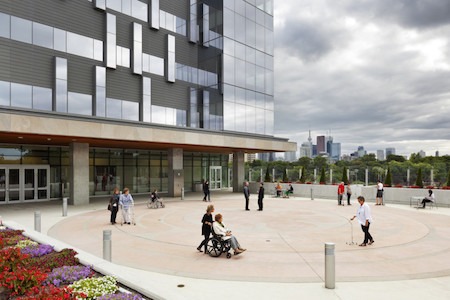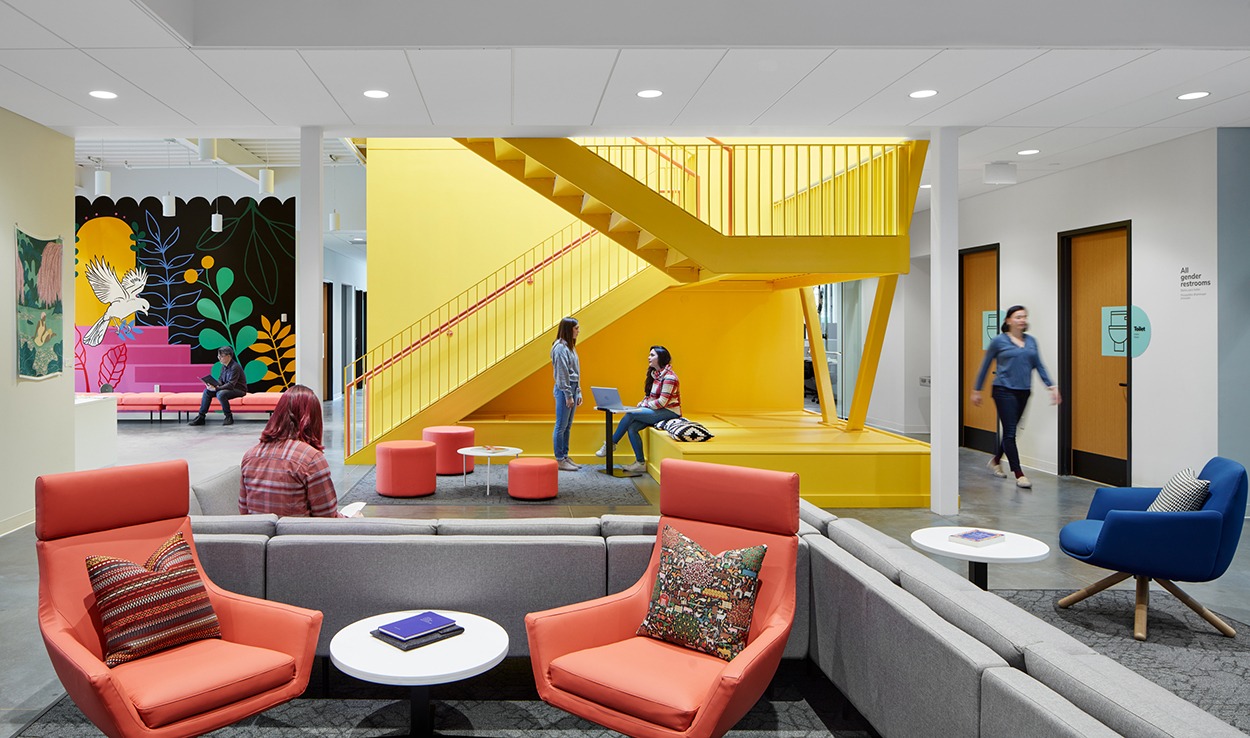
Bridgepoint Active Healthcare. Photo: Tom Arban
Have you ever heard of generative space? I heard Wayne Ruga talk about it earlier this month at the Healthcare Facilities Symposium in Chicago. Up until then, I'd only read a little about it, but never thought much about generative space.
Ruga's definition of generative space is "a place -- both physical and social -- where the experience of the participants in that place is one that both fulfills the functional requirements of that place and it also materially improves the health, healthcare, and/or quality of life for those participating in that experience in a manner that they can each articulate in their own terms."
Three projects were given the Generative Space Award this year at the Symposium -- Bridgepoint Active Healthcare in Toronto, Town Hall Apartments in Chicago, and Humanscale's Denver office.
I wrote an article about Bridgepoint last year for Healthcare Design. So I talked to many people on the project team. But not one of them mentioned generative space.
One of the architects on the Town Hall Apartments team also confessed to me that they didn't really design it with generative space in mind either.
Improving Over Time
Does that mean these projects aren't worthy of a Generative Space Award? Not at all. It just means that the concept of generative space wasn't the driving force for these projects.
What was, then?
When we first started talking about evidence-based design, healthcare architects told me that it wasn't anything new -- that they had always designed their projects based on past experience and available evidence. I think it is the same for generative space.
In fact, Ruga's definition of generative space is very similar to the outcomes that a healthcare project designed using an evidence-based design process should achieve. By expanding it across the "full range of life's contextual situations," he opens it up to more than just healthcare facilities.
The idea that a generative space is also a place that progressively and tangibly improves over time seems kind of new, though. What healthcare spaces do you know that do this?
Tasking Students to Use Generative Space Concept
For several years, Ruga's organization, The CARITAS Project, has partnered with the AIA Chicago Healthcare Knowledge Community and Assa Abloy to do a student charrette at the Symposium. This year, five teams were tasked with using the concept of generative space to develop an ambulatory/outpatient/community environment to address behavioral health issues.
Again, in looking at their designs, I see similar concepts that are not just associated with generative spaces. Connection to the community. Access to nature. Sensory stimulation. But something cool is happening by engaging these students to go through this process.
Whether the concept of generative space will ever gain much traction in healthcare is hard to tell. Even though it was introduced in 1999 (about the same time as the term evidence-based design was coined), it's still relatively new.
What's your take on it?
P.S. Please do me a favor -- if you liked this post and like this blog, please share it with others by sending them the link and/or post it on your Twitter, LinkedIn, or Facebook, etc. Also, don't forget to subscribe, so you'll get emails when new content is posted. Thanks!






